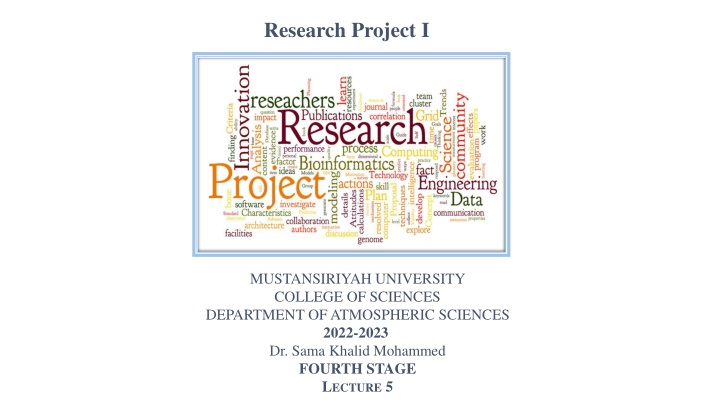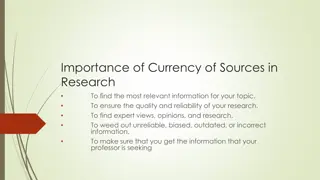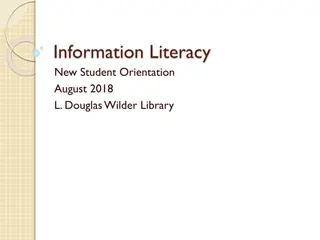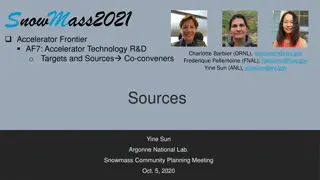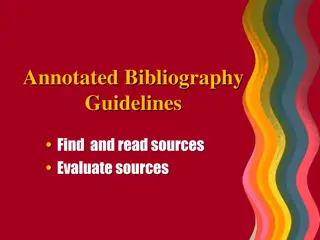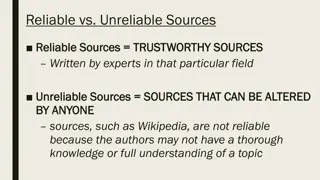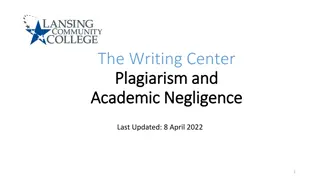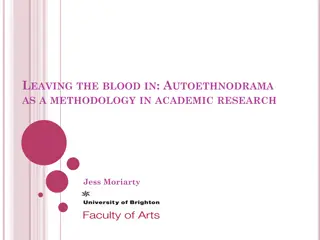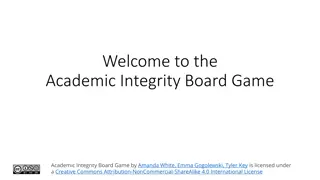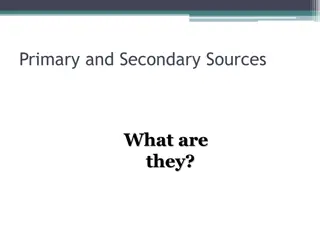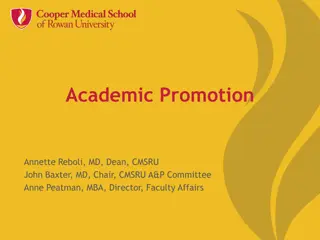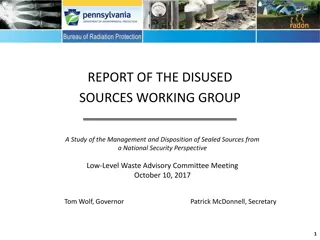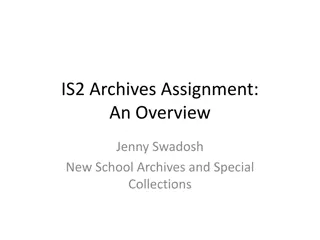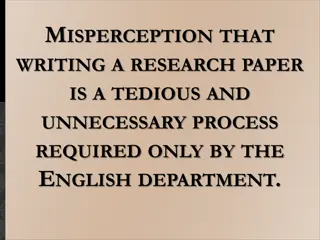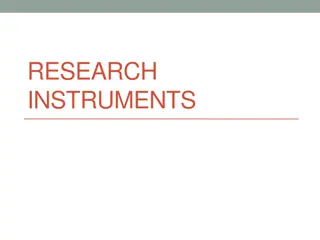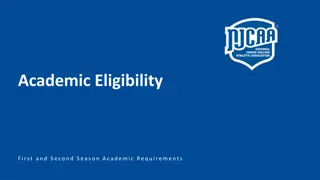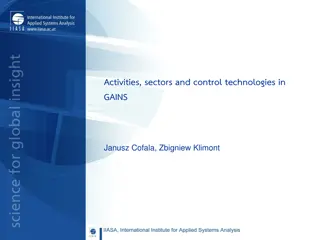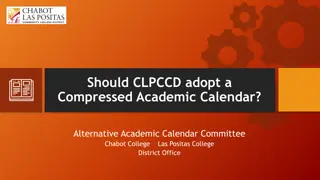Sources to Meet Academic Research Needs
When starting a research project, it's crucial to gather background information from a variety of sources. Understanding the types of sources needed to learn, answer research questions, and convince audiences is essential for academic success.
Download Presentation

Please find below an Image/Link to download the presentation.
The content on the website is provided AS IS for your information and personal use only. It may not be sold, licensed, or shared on other websites without obtaining consent from the author.If you encounter any issues during the download, it is possible that the publisher has removed the file from their server.
You are allowed to download the files provided on this website for personal or commercial use, subject to the condition that they are used lawfully. All files are the property of their respective owners.
The content on the website is provided AS IS for your information and personal use only. It may not be sold, licensed, or shared on other websites without obtaining consent from the author.
E N D
Presentation Transcript
Research Project I MUSTANSIRIYAH UNIVERSITY COLLEGE OF SCIENCES DEPARTMENT OF ATMOSPHERIC SCIENCES 2022-2023 Dr. Sama Khalid Mohammed FOURTH STAGE LECTURE 5
Sources to Meet Needs 1. When you first get a research assignment and perhaps for a considerable time afterward, you will almost always have to learn some background information. Sources from any category and from any subgroup within a category except journal articles can meet students need to learn background information and understand a variety of perspectives. Journal articles, are usually too specific to be background. From easy-to understand to more complex sources, read and/or view those that advance your knowledge and understanding. Sources you use for background information don t have to be sources that you cite in your final report, although some may be. Quantitative or Qualitative: Either whatever advances your knowledge. Fact or Opinion: Any whatever advances your knowledge. Scholarly, Professional, or Popular: Any whatever advances your knowledge. Primary, Secondary, or Tertiary: Any whatever advances your knowledge. Publication Format: Any whatever advances your knowledge.
Sources to Meet Needs 1. When you first get a research assignment and perhaps for a considerable time afterward, you will almost always have to learn some background information. While trying to build a scientific background, you need to learn the language that professionals and scholars have used when writing about your research question. That language will help you later, particularly when you re searching for sources to answer your research question. To identify that language, you can always type the word glossary and then the discipline for which you re doing your assignment in the search engine search box. Here are two examples to try: Glossary Meteorology Glossary AtmosphericSciences (Putting a phrase in quotes in most search boxes insures that the phrase will be searched rather than individual words.)
Sources to Meet Needs 2. To Answer Your Research Question You have to be much pickier with sources to meet this need because only certain choices can do the job. Whether you can use quantitative or qualitative data depends on what your research question itself calls for. primary and secondary sources can be used and, in addition, those need to be professional and/or scholarly sources for most disciplines. If it is not clear to you from the formats of sources you are assigned to read for your course, ask your professor which formats are acceptable to your discipline for answering your research question. Quantitative or Qualitative: Will be determined by the question itself. Fact or Opinion: Professional and scholarly for most disciplines. Scholarly, Professional, or Popular: Professional and scholarly for most disciplines. Primary, Secondary, or Tertiary: Primary and secondary. Publication Format: Those acceptable to your discipline.
Sources to Meet Needs 3. To Convince Your Audience Convincing your audience is similar to convincing yourself and takes the same kinds of sources as long as your audience is made up of people like you and your professor, which is often true in academic writing. That means using many of those sources you used to answer your research question. When your audience isn t very much like you and your professor, you can adjust your choice of sources to meet this need. Perhaps you will include more that are secondary sources rather than primary, some that are popular or professional rather than scholarly. Quantitative or Qualitative Data: according to your audience. Fact or Opinion: according to your audiences. Scholarly, Professional or Popular: according to your audience. Publication Mode: Primary and secondary sources if your audience is like you & your professor. Otherwise you better include more secondary sources than primary. Publication Format: Those acceptable to your discipline.
Sources to Meet Needs 4. To Describe the Situation Quantitative or Qualitative: Whatever you think will make the description most clear. Fact or Opinion: Often to educate and inform, but sources don t have to do that formally here, so they can also be to entertain or sell. Scholarly, Professional, or Popular: Whatever you think will make the description most clear. Primary, Secondary or Tertiary: Whatever you think will make the description most clear Publication Format: Whatever you think will make the description most clear.
Sources to Meet Needs 5. To Report What Others Have Said The choices here about kinds of sources are easy: just use the same or similar sources that you used to answer your research question that you also think will be the most convincing to your audience. Quantitative or Qualitative: Fact or Opinion: Scholarly, Professional, or Popular: Primary, Secondary, or Tertiary: Publication Format: Those sources that you used to answer your research question that you think will be most convincing to your audience. Instructions: Choose the correct answer(s) for each question.
Sources to Meet Needs You can download the table at http://go.osu.edu/planforsources , then fill it out
Precision Searching Search Strategy This information on precision searching is based on how search tools such as Google and specialized operate. databases
Precision Searching Search Strategy - Main Concepts Identify the main concepts in your research question by selecting nouns important to the meaning of your question. Leave out words that don t help the search, such as adjectives, adverbs, prepositions and, usually, verbs. Nouns that you would use to tag your research question so you could find it later are likely to be its main concepts. Be alert to words that may have connotations other than the concept you are interested in. For instance, if you identify depression as a main idea, beware that the search engine won t automatically know whether you mean depression as a psychological state or as a condition of the economy or as a weather characteristic. EXAMPLE: How are birds affected by wind turbines? The main concepts are birds and wind turbines. Avoid terms like affect (except the noun) and effect as search terms, even when you re looking for studies that report effects or effectiveness.
Precision Searching Search Strategy - Main Concepts
Precision Searching Search Strategy - alternative terms For each main concept, list alternative terms, including synonyms and singular and plural forms of the words. Sometimes synonyms, plurals, and singulars aren t enough. So also consider associations with other words and concepts. For instance, it might help, when looking for information on the common cold, to include the term virus because a type of virus causes the common cold. Use this site https://www.thesaurus.com/ Check to make sure that your terms are not too broad or too narrow for what you want. Figuring out what s too broad or too narrow takes practice and may differ a bit with each search.
Precision Searching Search Strategy - Subject Headings Instead of Keywords All the searches we have talked about so far have been keyword searches, usually used in search engines. But sometimes it pays to use tools such as library catalogs and journal article databases that have subject headings that you can search. Subject headings are standardized terms that are assigned by trained experts. (Some such tools also allow keyword searching).
Precision Searching Search Strategy - Subject Headings Instead of Keywords
Precision Searching Search Strategy - Search Statements At this point in your search process, you are moving from merely identifying main concepts and similar search terms to developing more complicated search statements that can do more precise searching. Use Quotation Marks for Phrases Use Wildcard and Truncation Symbols to Broaden
Precision Searching Search Strategy - Search Statements https://www.youtube.com/watch?v=Ed7EswsnEbM Consider AND, OR, NOT AND If the main idea contains two or more ideas, you ll want to use AND to combine those terms in your search statement. OR If the main idea has several synonyms, use OR to combine them. NOT If the main idea has a common use you want to exclude, use NOT to exclude that word. Using Parentheses with Multiple Operators When a search requires multiple Boolean operators (AND, OR, NOT, or their symbols), you must use parentheses to group the appropriate terms and quotation marks with each Boolean operator. The resulting statements connect terms, remove terms, and organize search terms in ways that result in complex and precise searching.
